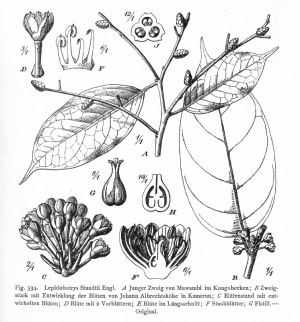Wikisage, the free encyclopedia of the second generation, is digital heritage
Celastrales
Jump to navigation
Jump to search





Celastrales include only two families Celastraceae and Lepidobotryaceae.[1] Maytenus is probably polyphyletic[2]
Description
The stamina and staminodes equals petals, filament out or inside on the nectar disk, connate styles and 2-4 ovules per locule[3]
Celastrales is monophyletic taking into account phylogenetic sequences-based studies which represent eurosiden 1st that is sister of Oxalidales plus Malpighiales[4]
Links
Taxa
M nemorosa
- ↑ http://www.mobot.org/mobot/research/apweb/orders/celastralesweb.html
- ↑ JJ Cappa et al.
- ↑ http://exa.unne.edu.ar/biologia/diversidadv/documentos/ANGIOSPERMAS/Rosideas/Eurosides%20I/2-Subclado%20de%20la%20Celastrales,%20Malpighiales%20y%20Oxalidales/1-Celastrales/Celastrales+Celastraceae.pdf
- ↑ K Kubitki
- ↑ http://flora.huh.harvard.edu/china/mss/volume11/Celastraceae.pdf